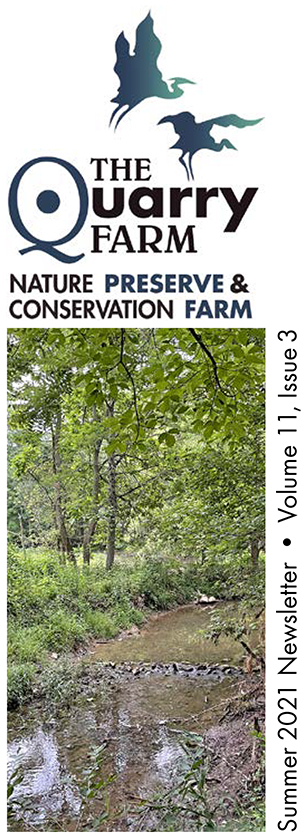I think it will always thrill me to overhear someone asking someone else if they have ever been to The Quarry Farm, for people to talk about the animals, birds, gardens and the clarity of the stream. Not everyone will turn over their yard to goats, roosters, and geriatric pigs, but gardens—the riotous kind filled with a variety of native flowering plants—and trees can make birds and clear water more common. This region’s native grasses and trees have long, branching root systems that hold the soil like a strong net. Have you ever pulled English Ivy? This non-native is tenacious and fast-growing but you can remove a large patch with one pull, so shallow-rooted and interwoven is this European transplant. In contrast, ever tried to pull a Common Milkweed in its entirety? Best of luck.
Old Man Sycamore in the north floodplain of the nature preserve has a hollow base that provides shelter to who knows how many creatures each night and during winter’s worst. As shallow-rooted landscapes topple across Northwest Ohio, he and the 300-year oaks withstand wicked flood currents and down-bursts. As the floodwaters recede, the forbs at his feet grasp run-off silt and soil. Within 36 hours, Cranberry Run is clear again.
You hear a lot about native plants these days. Big-box stores as well as local nurseries stock a variety of plants labeled as native. Keep in mind that native doesn’t always mean native to here. Also, ask your green-grower what kind of substrate your plants are potted in. Mass-marketed plants are often potted for long shelf lives, their roots sandwiched in neonicotinoid-laced soils that wreak havoc on bees and other beneficial insects.
Remember that part about riotous gardens? Variety is the spice of life. Some native plants can be invasive without other native plants to keep them in check. The Quarry Farm Gardener finds it necessary to parcel out starts of Coneflower every now any then, as well as Menarda (Bee Balm). Much is made of the benefits of keeping Common Milkweed for the Monarch butterflies. Without Ironweed, Coneflower, Asters, and Common Hackberry trees to watch over them all, who will feed and shelter Comma, Question Mark, swallowtails, and the Hackberry Emporer butterflies? And without Jewelweed and its orange orchid-like flowers nodding on the riverbanks and floodplains, how will I ever be rid of this confounded poison ivy rash?







